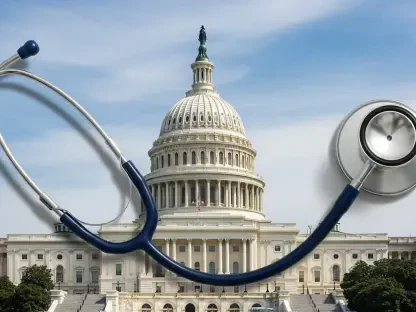Evaluating the fiscal landscape created by President Trump’s budget legislation reveals critical insights into its implications for Black communities nationwide. Signed into law amid considerable debate, the budget ostensibly aims to foster economic opportunity. However, data-driven analyses suggest that it may deepen existing disparities, compounding societal challenges faced by Black families. This market analysis seeks to unravel complex economic trends and projections emerging from the budget’s provisions, focusing on their broader impact and potential long-term consequences.
Contextual Backdrop of Economic Policies
Understanding the dynamics of current fiscal policy requires an exploration of historical shifts influencing Black communities. American economic policies, including tax reforms, welfare adjustments, and federal spending decisions, have shaped financial realities for Black families over time. These transformations provide valuable context for assessing the contemporary budget measures, enabling a deeper examination of systemic inequities that may be perpetuated by recent legislative changes.
Assessment of Key Budget Components
Central to the budget’s implications are the lasting corporate tax reductions, which have sparked intense debate. Advocates assert these cuts symbolize fiscal prudence, while critics warn of potential increases in the national deficit. Such financial strain could necessitate cuts to essential welfare programs, like Medicaid and SNAP, which serve as lifelines for millions of Black households. Exploring these opposing perspectives reveals significant challenges posed by budget restructuring, alongside the purported fiscal advantages touted by supporters.
Economic Opportunity Zones: Evaluation of Regional Growth
The Opportunity Zone initiative represents a pivotal aspect of the budget, aimed at revitalizing economically distressed areas. Despite its intentions to spur local growth, criticisms have surfaced regarding its role in fueling gentrification. This section compares outcomes across designated opportunity zones with those in neighboring regions, evaluating whether intended economic benefits reach resident incomes or primarily benefit outside investors. The program’s effectiveness—and potential drawbacks—illuminates broader disparities in economic growth strategies.
Regional Impacts and Educational Equity
Examining other intricate budget elements, including the school choice tax credit and the repeal of Section 899, reveals varied impacts across diverse states. These provisions affect education systems uniquely, raising questions about their influence on Black students. By incorporating case studies and expert insights, this analysis addresses preconceived notions of uniform benefits, uncovering overlooked factors affecting under-resourced educational environments. Black communities across state lines experience distinct economic hurdles, underscoring the importance of nuanced policy evaluations.
Emerging Trends in Fiscal Policies
As economic landscapes evolve, technological advancements and shifting regulatory priorities hold potential to redefine budget impacts. Emerging financial trends, spearheaded by innovation, offer both opportunities and challenges in reshaping socioeconomic norms among Black communities. This segment explores future trajectories in fiscal frameworks, assessing how these developments could alter economic realities and community well-being. Insights gathered here chart possible paths forward, emphasizing dynamic adjustments tailored to unique demographic needs.
Strategic Reflections and Future Considerations
The analysis indicated that while Trump’s budget introduced certain economic opportunities, sizable drawbacks persisted for Black families. Given these insights, strategic recommendations emerged to guide businesses and policymakers toward more equitable fiscal approaches. Advocacy for inclusive fiscal measures, investment in community-driven initiatives, and evaluation of economic programs through transparent lenses were encouraged. Empowering stakeholders with actionable strategies drove efforts for effective navigation of new fiscal environments.
In conclusion, the analysis underscored that while the budget legislation reflected aspirations for economic resurgence, it inadvertently reinforced entrenched societal disparities. Its significance lay in how it highlighted ongoing systemic issues, emphasizing the necessity of vigilance and proactive policy measures. Sustained advocacy for fairness and equity was deemed essential, forming the bedrock for future fiscal endeavors aimed at true prosperity for all citizens.









